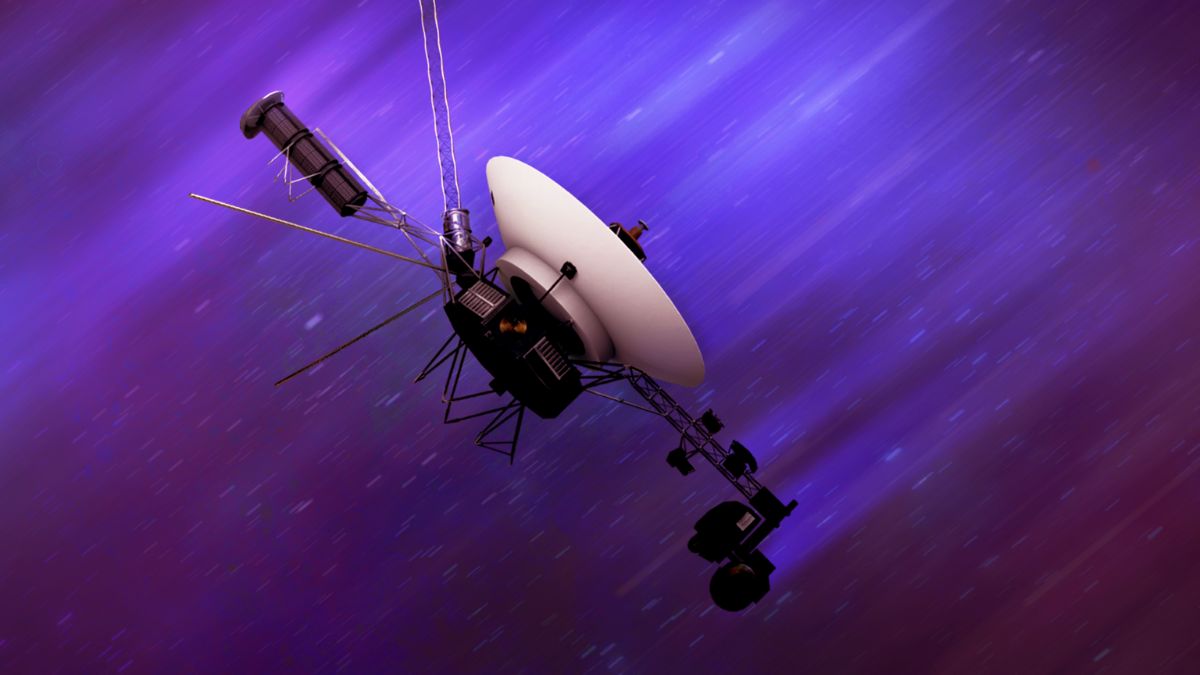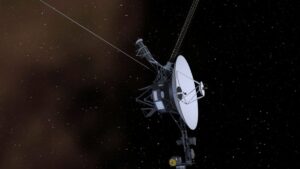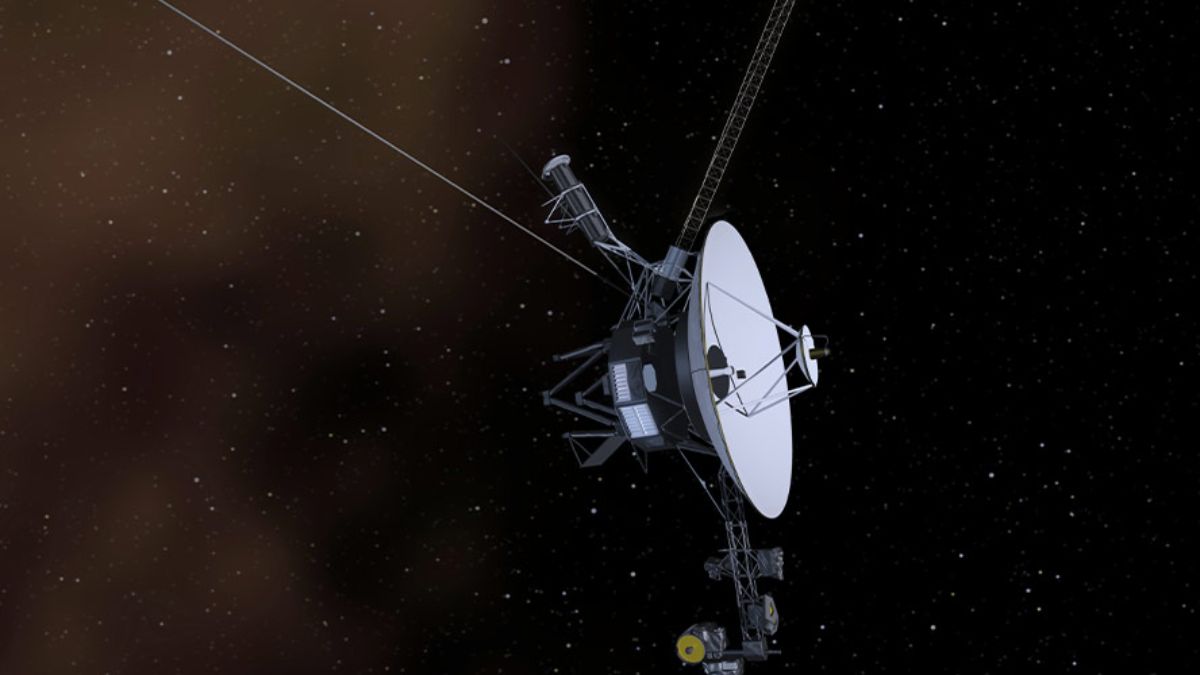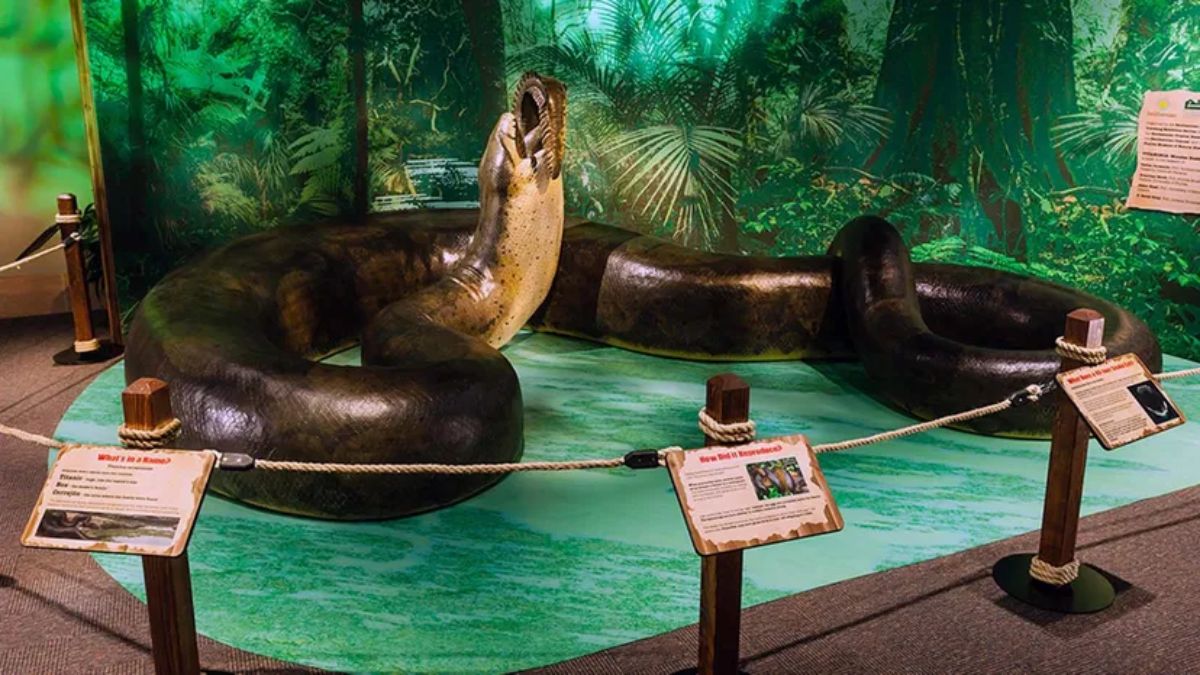NASA’s Voyager 1 is on the verge of making history once again. On November 15, 2026, the spacecraft will become the first human-made object to travel one full light-day from Earth. That’s around 16 billion miles—a distance so vast that light itself takes 24 hours to cover it. It’s a milestone that reminds us just how far we’ve come in our exploration of space, and how much farther we have to go.
Table of Contents
Since its launch in 1977, Voyager 1 has continued to push the boundaries of human achievement, silently cruising through the cosmos and sending back data from the outer edges of the solar system. Its journey is a story of patience, perseverance, and humanity’s endless curiosity.
Journey
Voyager 1 started as part of NASA’s Voyager mission to study the outer planets. It flew past Jupiter and Saturn, capturing never-before-seen images and data. But its most significant milestone came in 2012, when it crossed the heliopause—the invisible boundary marking the end of the Sun’s solar wind influence—and entered interstellar space.
Now moving at 38,000 miles per hour, Voyager 1 continues its lonely path outward. Even though it’s no longer near any planets, it still sends back signals, which now take nearly 24 hours to reach Earth. That’s how far away it is—so far that even light needs a full day to bridge the distance.
Date
Mark your calendar for November 15, 2026. On that date, Voyager 1 will officially be one light-day from Earth. Just over two months later, on January 28, 2027, it will reach the same distance from the Sun.
These moments aren’t just about numbers. They symbolize how a spacecraft the size of a small car has carried humanity’s presence farther than ever before—powered by a technology that’s older than most people alive today.
Speed
To understand how far Voyager 1 has gone, it helps to think about speed. Light travels at roughly 186,000 miles per second, meaning it can reach the Moon in just over a second and the Sun in about eight minutes. In contrast, the fastest human-made object—Apollo 10’s return capsule—hit around 25,000 mph, and even that would take months to reach the Sun.
Voyager 1, while incredibly fast by our standards, has taken nearly 50 years just to reach one light-day. It’s humbling—and inspiring. It shows how far we still are from the dream of faster-than-light travel, but also how persistence and patience pay off.
Edge
As Voyager travels farther, it raises the question: where does the solar system actually end?
Many assume it ends at Pluto, but in reality, our Sun’s gravitational reach extends much farther—to the Oort Cloud, a vast region of icy bodies up to 2 light-years away. At Voyager’s current speed, it would take nearly 40,000 years to reach that edge.
So while Voyager has already passed the heliopause, it’s still deep within the Sun’s gravitational domain. It reminds us that the universe isn’t made of clear-cut lines—but of vast, overlapping zones where one influence fades and another begins.
Wonder
Voyager’s journey also invites us to dream. Can we ever build spacecraft that move faster—fast enough to explore nearby stars within a single lifetime? Will we someday communicate across interstellar distances, or perhaps even visit the places we now only see in images?
For now, Voyager is a quiet ambassador. It’s out there, moving deeper into the unknown, still whispering to us through the silence. It’s proof that exploration doesn’t always need to be flashy or fast—it just needs to be relentless.
Future
Missions like Voyager may not bring back gold or new technology, but they bring something else: perspective. They show us how tiny we are in the vastness of space—and how powerful we are when we choose to keep going.
One day, future explorers might look back at Voyager as the first breadcrumb on a path that led us to the stars. For now, it’s a symbol of everything that makes exploration worthwhile: hope, science, and the courage to keep reaching.
So, if you could send Voyager 1 a message right now, what would it say? Would you thank it for its service, ask it what it sees, or simply wish it safe travels?
Whatever your message, just remember: it’s still out there, carrying our story, one light-day at a time.
FAQs
When will Voyager 1 be one light-day away?
On November 15, 2026, it will reach that distance.
How fast is Voyager 1 traveling?
At about 38,000 miles per hour.
Is Voyager 1 still sending data?
Yes, though signals take nearly 24 hours to reach Earth.
What is the heliopause?
It’s the boundary where the Sun’s solar wind ends.
Will Voyager ever leave the solar system?
Yes, but it will take around 40,000 more years.

















